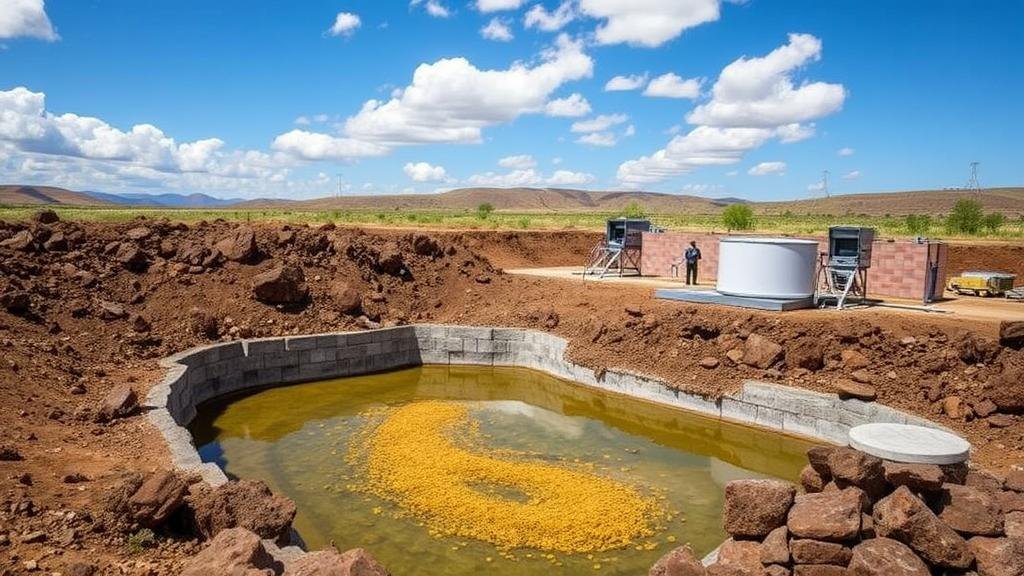Building Small Cyanide-Free Systems for Gold Recovery in the Field
Building Small Cyanide-Free Systems for Gold Recovery in the Field
The quest for sustainable and environmentally-friendly methods of gold recovery has led to innovations in cyanide-free processing technologies. Small-scale miners and artisanal operations especially benefit from these systems, which allow for effective gold extraction without the associated environmental and health risks posed by cyanide. This article outlines the essential aspects of constructing small cyanide-free systems for gold recovery in the field, highlighting various methods, technologies, and their applications.
Understanding Cyanide Alternatives
Currently, the majority of gold extraction globally relies on cyanide due to its effectiveness in separating gold from ore. But, increasing regulatory scrutiny and environmental concerns have promoted the need for alternatives. Various cyanide-free methods include:
- Gravity concentration
- Flotation
- Bioleaching
- Thiosulfate leaching
Among these, gravity concentration and bioleaching are particularly noteworthy for small-scale operations due to their simplicity and minimal resource requirements.
Gravity Concentration Techniques
Gravity separation exploits the difference in specific gravity between gold and other minerals. Techniques include panning, sluicing, and the use of shaking tables. e methods have been successfully employed in various field settings, where they can be operated with basic tools.
For example, a study conducted in Ghana showed that local miners could achieve gold recovery rates of up to 95% using simple sluice boxes, significantly reducing the need for toxic chemicals.
Useing Bioleaching
Bioleaching employs microorganisms to extract gold from ores through a natural process. It relies on bacteria which can oxidize sulfide minerals, thereby liberating the gold. This method is particularly useful in treating low-grade ores that may be uneconomical to process using traditional methods.
In a case in Brazil, researchers demonstrated the successful extraction of gold from residues using a bioleaching process, achieving a recovery rate of approximately 75%. Also, the implementation of bioleaching can often be conducted with minimal infrastructure, reducing the initial investment costs for small-scale miners.
Thiosulfate Leaching as an Alternative
Thiosulfate leaching has emerged as a viable cyanide-free alternative due to its ability to dissolve gold under ambient conditions. This method is particularly effective for high sulfide ores. Successful experiments in Australia demonstrated that thiosulfate leaching could achieve gold recoveries comparable to cyanide, with added environmental benefits.
But, the necessity for a controlled environment and the availability of specialized reagents may pose challenges for immediate implementation in remote locations. efore, ongoing research and development are focused on simplifications that could benefit field operators.
Case Studies of Successful Useation
A notable example of successful cyanide-free gold recovery can be found in Mongolias artisanal mining sector, where gravity-based systems have been implemented. The miners utilized locally available materials to construct rudimentary sluicing systems that have significantly improved gold recovery while minimizing environmental disturbances.
Plus, programs supported by NGOs have promoted education and training, allowing miners to build their own systems tailored to local geological and economic conditions. The initiative has led to improved livelihoods and enhanced community resilience without the health risks associated with cyanide exposure.
Challenges and Considerations
While cyanide-free methods offer a more sustainable alternative for small-scale gold recovery, there are challenges that must be addressed:
- Economic feasibility: Initial investments may be higher for some cyanide-free methods.
- Technical expertise: Local miners may require training to effectively utilize new technologies.
- Regulatory frameworks: Understanding and complying with local mining regulations remains crucial.
Actionable Takeaways
To establish a successful cyanide-free gold recovery system in the field, operators should consider the following steps:
- Evaluate the local ore characteristics to determine the most suitable recovery method.
- Engage in training and capacity-building workshops to enhance local expertise.
- Use local resources and materials to reduce costs and environmental impact.
- Collaborate with NGOs and research institutions for technical support and innovation.
Building small cyanide-free systems for gold recovery not only enhances environmental stewardship but also promotes economic viability and community development. As more methods become available and accessible, the future of gold extraction can move towards a greener, safer approach.



